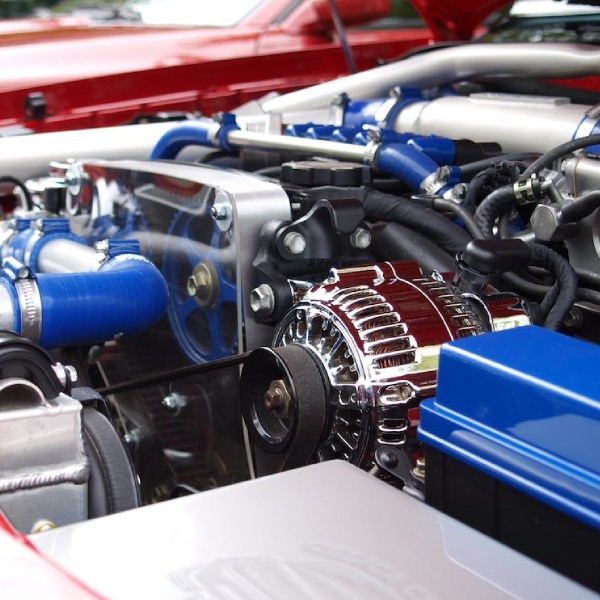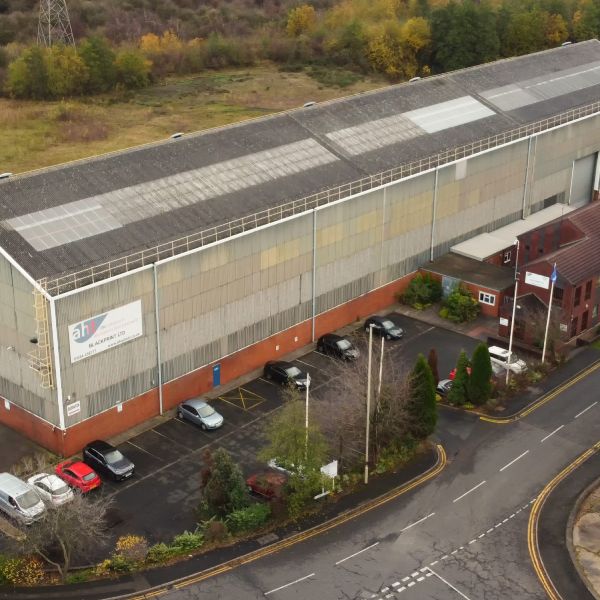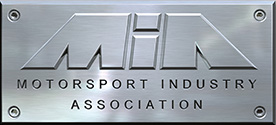Automotive
With a successful track record in automotive heat treatment for 30+ years and experience of heat treatment for motorsport, engine components, transmission components, suspension components, wheel components and structural components for OEM’s like Mercedes and McLaren, we’re the preferred choice for heat treatment of materials used in the automotive sector.
Our Automotive Heat Treatment Service
Heat Treatment for the Automotive Sector
In the dynamic world of the automotive industry, precision and durability are paramount. To meet the demanding requirements of modern vehicles, the use of heat treatment for alloys, aluminium, and metals has become indispensable. This blog explores why heat treatment plays a pivotal role in enhancing the performance and reliability of various automotive parts, such as cam covers, engine blocks, suspension parts, engine components, transmission parts, and suspension components. We will also shed light on the relevant National, International and OEM Standards that Alloy Heat Treatment adheres to in order to work on projects within the automotive sector.

Automotive Components That Require Heat Treatment:
There are many automotive components that require heat treatment to meet industry standards, such as:
- Heat Treatment for Suspensions Components
- Heat Treatment for Transmission Components
- Heat Treatment for Wheel Components
- Heat Treatment for Structural Components
- Turbo Housings
- Cylinder Heads
- Cylinder Blocks
- Cam Covers
- Engine Mount brackets
- Bumper Brackets
- Transmission casings
- Structural pillars
- Suspension
- Road Wheels and Hubs
- Brake calipers
Strengthening & Hardening Of Automotive Components
Strengthening and Hardening Engine Components
Heat treatment processes like hardening and tempering (ferrous alloys), solution treatment and ageing (aluminium alloys) are used to strengthen and harden critical engine components, including cam covers and engine blocks. These procedures enhance the structural integrity of the parts, ensuring they can withstand expected service conditions such as temperature, pressure and cyclic loading, without compromising performance. Heat-treated engine components exhibit improved wear resistance, increased fatigue strength, and reduced risk of premature failure, contributing to the overall longevity and reliability of the engine.
Enhancing Mechanical Properties of Suspension Parts
Suspension parts are subject to tremendous stress, impact, and vibration while ensuring stability and comfort during vehicle operation. Heat treatment methods such as solution treatment and precipitation hardening enable parts such as suspension control arms and suspension knuckles, to achieve improved strength, hardness, and resistance to fatigue. By undergoing proper heat treatment, these components can withstand heavy loads, maintain their shape, and deliver optimal performance, ultimately enhancing the overall ride quality and safety of the vehicle.
Improving Performance and Durability of Engine Parts
Engine parts, manufactured from ferrous alloys, including crankshafts, connecting rods, and valves, are subjected to extreme conditions, such as high temperatures and cyclic loading. Through heat treatment processes such as nitriding, carburizing, and annealing, these components acquire enhanced wear resistance, improved fatigue strength, and increased surface hardness. Heat-treated engine parts experience reduced friction, lower risk of wear and corrosion, and improved dimensional stability, ensuring smooth operation, extended lifespan, and increased fuel efficiency.
Optimising Vehicle Transmission Components
Transmission parts, such as gears, shafts and bearings, play a vital role in transferring power and ensuring seamless operation of the drivetrain. Heat treatment techniques like induction hardening and case hardening are applied to enhance the hardness and strength of such components. This leads to reduced wear, improved resistance to pitting and cracking, and increased load-carrying capacity. Proper heat treatment of transmission components results in smoother gear shifts, improved power transmission efficiency, and ultimately, enhanced driving performance.
Heat Treatment for Motorsport Vehicles & Components
Alloy Heat Treatment has a strong presence within the motorsport sector, working with OEMs such as Mercedes and McLaren. We are able to heat treat high performance peripheral parts such as engine heads and blocks, cam covers, structural and suspension parts etc…
Adherence to International Standards, British Standards and OEM standards within the Automotive Sector
In the UK, Alloy Heat Treatment adheres to a number of furnace control and process control standards, to ensure compliance and quality in their automotive projects. For instance, AMS2750 and AIAG CQI-9 specifies the requirements for heat treatment facilities, equipment, and processes used in the automotive industry. It covers aspects such as temperature control, uniformity, cooling rates, and hardness testing. By following these standards, Alloy Heat Treatment ensures that their services meet the highest industry benchmarks, delivering heat-treated parts that meet the stringent requirements of automotive manufacturers.
Fast & Efficient Turnaround on Automotive Projects
From major integral parts such as turbo housings, cylinder heads, cylinder blocks through to bumper brackets, our processes operate to the same exacting standards as our work within the aerospace sector, allowing us to deliver an unrivalled automotive aluminium heat treatment service.
We pride ourselves on assisting automotive tier 1 & sub tier suppliers to best utilise aluminium within integral lightweight engine and suspension components.
Automotive Heat Treatment FAQ’s
Alloy heat treatment in automotive involves subjecting specific components and parts to controlled heating and cooling processes to enhance their mechanical properties.
Alloy Road Wheels, Suspension parts, Combustion Engine Parts (Heads, Blocks, Sumps, Cam Covers, etc.) are commonly heat treated in the automotive sector.
Automotive heat treatment primarily involves aluminium casting alloys 356 and A356.
Magnesium is added to enable age hardening, which enhances the strength of these alloys.
These alloys are favoured for their excellent castability and responsiveness to heat treatment, making them ideal for automotive foundries.
Solution annealing is used to dissolve any precipitates in the alloy and prepare it for further strengthening.
Quenching rapidly cools the alloy to “freeze” the desired microstructure, preventing it from returning to its original state.
Age hardening involves reheating quenched alloy parts to a specific temperature, allowing it to form stable precipitates that increase strength and hardness.
Straightening ensures that complex-shaped parts meet customer dimension requirements and maintain structural integrity.
Alloy road wheels are typically lighter and offer better performance and aesthetics than steel wheels.








